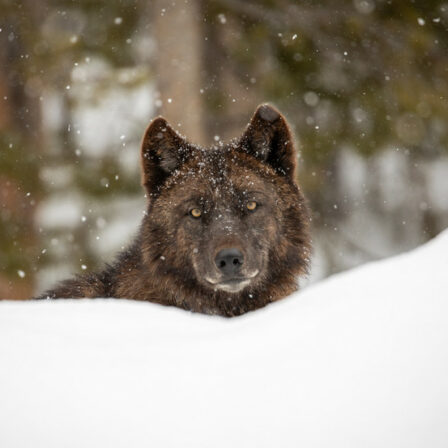The Presidential Report on Climate Change released last year addresses the significant risk multiple species are presented with due to global warming. Among the most vulnerable is the polar bear. The report projects that two thirds of the world’s polar bears could be gone by 2050 and there could be no wild polar bears in Alaska by 2085 unless immediate action is taken to address climate change.
According to the White House report, “about two-thirds of the world’s polar bears are projected to be gone by the middle of this century. It is projected that there will be no wild polar bears left in Alaska in 75 years.”
As the polar bear depends on sea ice for hunting and foraging, any ice loss effect them immediately and adversely. NASA has found that perennial sea ice is melting at a rate of 9% per decade and could disappear entirely within the century. Without sufficient sea ice on which to hunt, the bears are faced with few good options. They can either turn inland to forage and face the consequences of human interaction or confront the likelihood of starvation or drowning.
Climate change effects polar bears by impacting their prey species as well. Less snow can result in inadequate snow cover for seals to construct birth lairs, reducing seal reproductivity and by extension, the ability of polar bears to sustain themselves and their cubs.
Warming temperatures also effect the ability of female polar bears to give birth to and raise their young. Bears build dens in dense snow pack to hibernate several months a year and to give birth to cubs. Warmer temperatures mean less snow in which to build dens and the possibility of den collapse or decreased insulative properties, resulting in lower litter survival rates. The cubs, who are born weighing only 1 pound, may quickly freeze to death or be crushed by collapsing ice.
There are some international cooperative efforts already underway to maintain polar bear populations. The International Union for Conservation of Nature Polar Bear Specialist Group (PBSG) was formed in 1965 when representatives from Norway, Canada, Denmark, the United States and USSR met in Fairbanks to address polar bear conservation due to concern that populations were being over harvested. Members of the PBSG signed an agreement in 1973 to plan for the protection of the polar bear by mandating national research programs relating to the conservation and management of the species. The PBSG most recently met June 29th-July 3rd of last year and once again recognized that the greatest threat currently facing polar bears is climate change.
In response to a suit brought by ESC member organizations, a federal judge ordered the Department of the Interior to reconsider its 2008 decision not to provide polar bears the most complete protection possible under the Endangered Species Act.
Polar bears need the strongest protection possible if they’re going to avoid extinction. Up-listing them from “threatened” to “endangered” will provide needed resources and allow authorities to craft policies to save polar bears from extinction.




1 comment on “Polar Bear Peril”